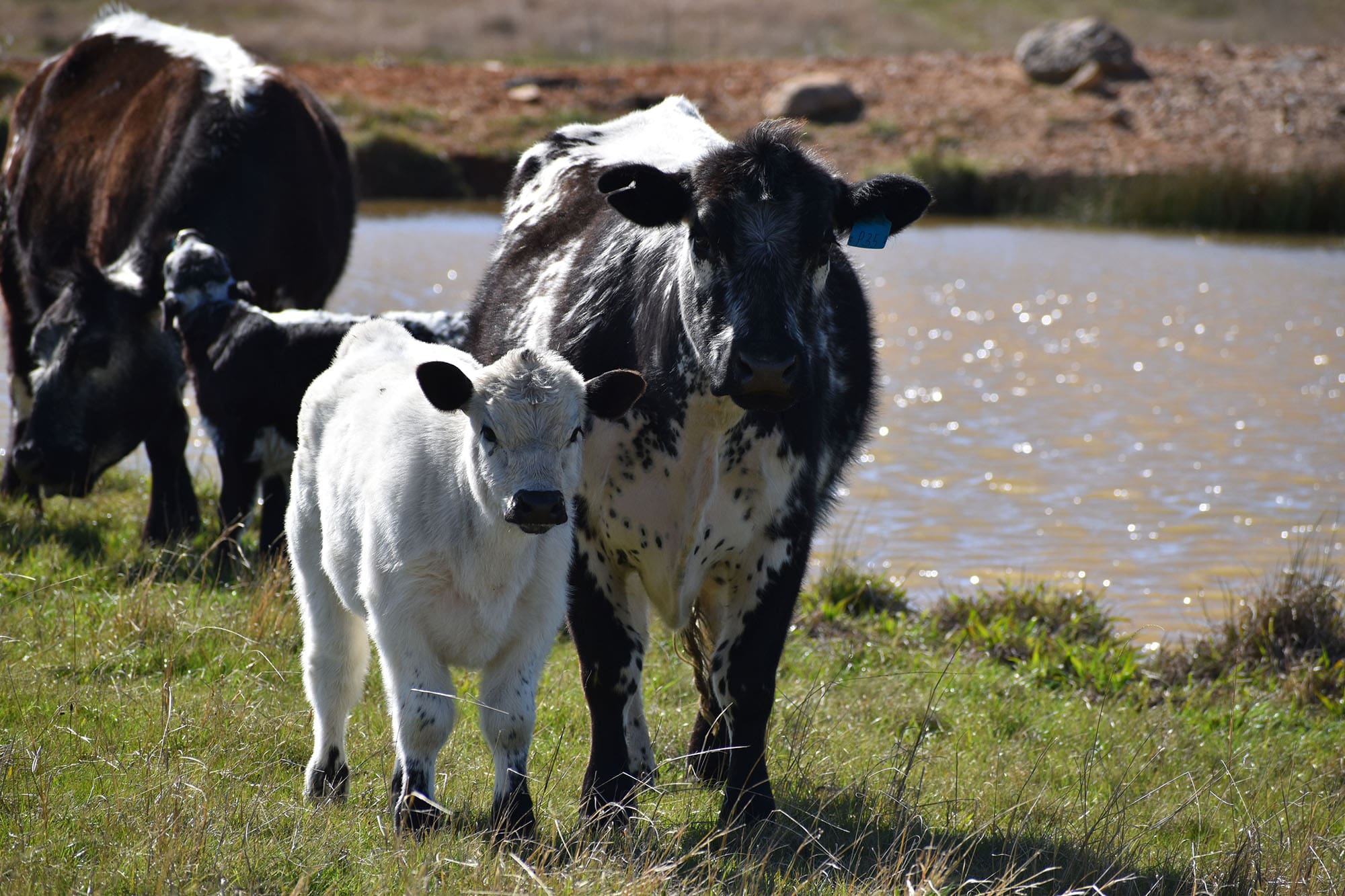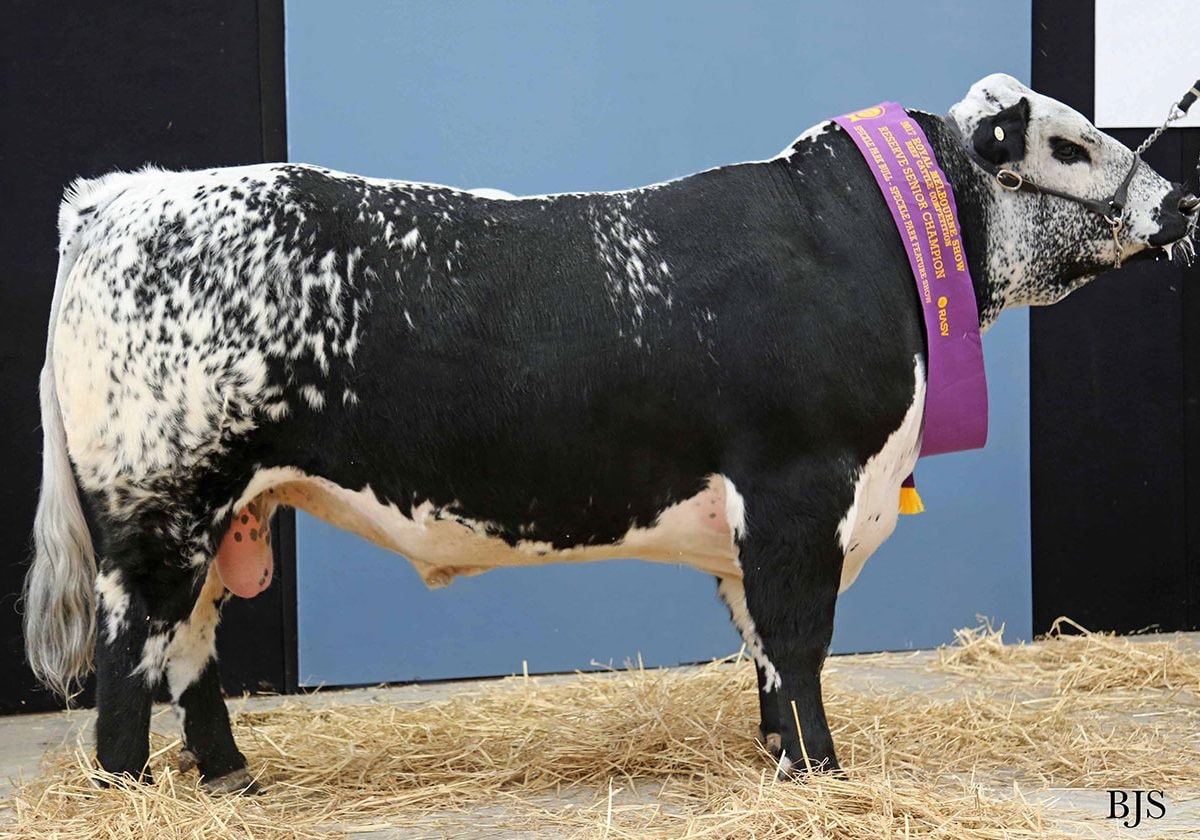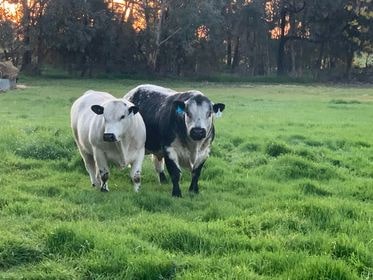
The search for World Leading Speckle Park Genetics
Starting in 2016, Alex and Natalie of Rose Hill Speckle Park Stud have now
The following article provides a guide to assist prospective Speckle Park buyers in making well-informed purchasing decisions at Multi-Vendor Sales.
Speckle Park cattle are making their mark on a thriving cattle market. Many people are trying to become a part of the breed which is resulting in record prices, particularly for females.
Single Stud Sales are a great place to buy cattle. Just as the cream always rises to the top, it is often clear to pick the best animals when you can see them amongst their stable mates. When all of the animals in a sale have been raised the same way, it is easy to see the high performers.
But what about the multi-vendor sale? Can you really trust your judgement when there are many animals with sometimes very varied preparations? Multi-vendor sales are an excellent place to see a wide range of leading Speckle Park genetics in one place. They are an outlet for smaller studs and give buyers a chance to see what they have to offer.
The best way to breed what you want is to know what you want. If you are aiming to produce finished cattle for the domestic premium market, you need to be looking for early maturing, deep bodied, moderate framed cattle. There is little point in bidding on the tallest, leggiest animal with above average 600 day and mature cow Breedplan EBVs. On the other hand, if your end game is to produce long fed feedlot bullocks, you will be after the type with a large frame and something that won’t mature until later. The Queensland market also looks for the larger framed animals. These animals need to have the legs to walk the distance and the frame size to work with the top end Bos Indicus cattle.
Once you know the type of Speckle Park you intend to produce, you can find studs in a multi-vendor sale who have similar breeding objectives. Most studs involved in multi-vendor sales are keen to talk about their cattle and will probably be more than happy to give you a herd tour ahead of the sale.
A herd tour is an excellent way to get a full picture of where the cattle come from. Pay attention to the unspoken details, often these details will tell you just as much as the breeder themselves. Look at soil types, feed quality and management practices. Expect cattle on good soil, improved pasture and supplements to be bigger, heavier and show more growth for age than cattle on lighter soil and native pastures. Likewise, expect cattle who are handled frequently to be quieter and more friendly than those run in a commercial way. Don’t accept any excuse however for animals who are much more flighty than their paddock mates, or aggressive.
Ask the breeder lots of questions about their breeding program: what market are they breeding for, what attributes they are aiming to improve or fix in their herd, what genetics have they been using and why.
Once you have seen what the animal’s genetics are doing in the herd of the breeder, look around to see how those genetics are performing in other herds. Like it or not, the internet has changed the way we look at cattle. Facebook and stud websites have a plethora of information and photos of Speckle Park cattle of many different bloodlines. Knowing bloodlines and what they are doing is valuable information at any time but especially valuable at a multi-vendor sale. There are bargains to be found for people who can spot a structurally correct but under prepared animal with a terrific pedigree. These are the animals that go on to produce better than themselves.
So now you’ve selected the animals in the multi-vendor sale catalogue that suit you. You know how the different animals have been raised so you can compare them fairly. You understand that the smaller animal with the terrific pedigree is probably only smaller because it has been raised on light country and hasn’t had much preparation for sale.
The next piece of information for your toolbox is Breedplan figures. It is only early days for Speckle Park Breedplan and so far only a few studs are willing and able to submit enough data to make it meaningful. Depending on how much data has been submitted for an animal, it could have a full bar of Breedplan data with over 70% accuracy or, if it has been an outcross used by only a few smaller studs, it could have very low accuracy and half the bar could be empty. That said, as more and more breeders become involved, more data will be recorded for every Speckle Park animal improving the accuracy of the whole breed making Breedplan a very valuable tool indeed. The way to use the tool now is as additional data to add integrity to the other information you have gathered. By checking the Breedplan data of an animal on the SPI database, you can also see what data has been submitted by the breeder for that animal. Most animals will have BW for birthweight analysed, an increasing number of animals have 200 and 400 day weights also submitted and analysed. Animals that have scrotal, IMF, EMA, docility etc recorded have been assessed by a qualified Breedplan assessor so their data would hold more weight.
Multi-vendor sales are excellent opportunities to expand your herd of Speckle Park cattle. Armed with information and an open mind, you can certainly put yourself in a prime position for success.

Starting in 2016, Alex and Natalie of Rose Hill Speckle Park Stud have now

Rose Hill Speckle Park offers leading Speckle Park genetics and semen, for sale all

The following article provides a guide to assist prospective Speckle Park buyers in making
Copyright 2022 © Rose Hill Speckle Park. All Rights Reserved.
This Website was designed and built by Stud Stock Marketing Services .